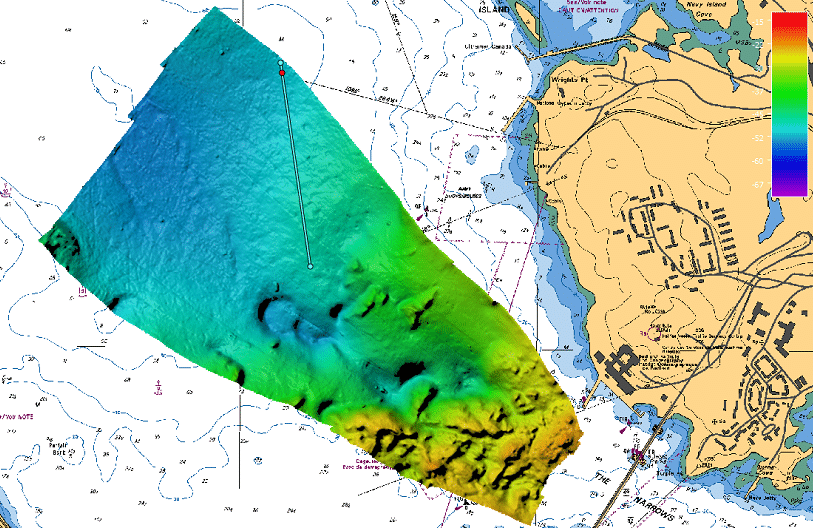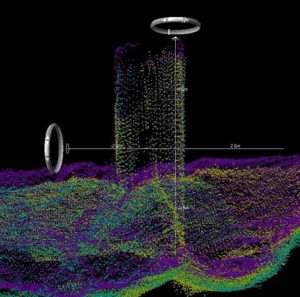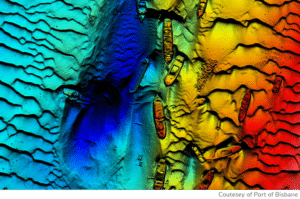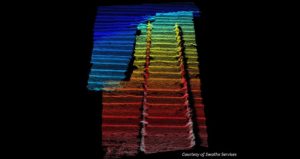Many surveys are in areas that are less than ideal for acoustics. These types of areas have seafloors that are soft and comprised mostly of mud as opposed to sand or gravel.
The multibeam transmitter emits an acoustic pulse that reflects mostly off of the bottom and back to the multibeam receiver. In areas of sand or gravel much more of the acoustic energy is reflected back to the receivers. In areas of mud or soft bottom a large portion of the acoustic energy is absorbed by the soft seafloor so much less energy is returned to the receivers. The soft bottom will also cause more refraction and scatter the acoustic return, which will reflect off of the water surface and bounce back to the sea floor before being reflected to the receivers; this causes a second return and can even cause a tertiary return.
The Acoustic Imagery should always be turned on (Display settings) as this will give the surveyor a good indication of the reflectivity of the sea floor (brighter colors). The stronger the return the more energy will be seen. The Acoustic Image will also make it easier to see if a second return is causing an issue, in which case the use of the gates will eliminate the second return interference. Another tool is the Saturation Monitor, which shows the actual receiver intensity level.
To overcome bottom absorption, in soft areas, a little basic acoustic theory helps. The acoustic pulse is always at a certain frequency. Frequency is the number of cycles per second; the more the cycles per second the more damage is done when the cycles are interrupted. 400kHz has twice as many cycles per second as 200kHz so more attenuation is seen at 400kHz even when the power level is the same for both frequencies.
Lower frequencies provide a better swath when surveying soft bottoms; there is less bottom absorption and less signal attenuation.
It is important to keep in mind the relationship between Power and Pulse width. Power is the amplitude of the transmitted pulse, whereas pulse width is the length of time the pulse is being transmitted. In soft bottom areas, increasing the amplitude does not do much good, whereas increasing the length of time the pulse goes into the water does by getting more total power to the outer beams.
Therefore, in soft areas, increase the Pulse Width first before increasing Power.
In the Saturation Monitor, the increased Pulse Width will show stronger outer beam energy, which translates to better swath coverage.




